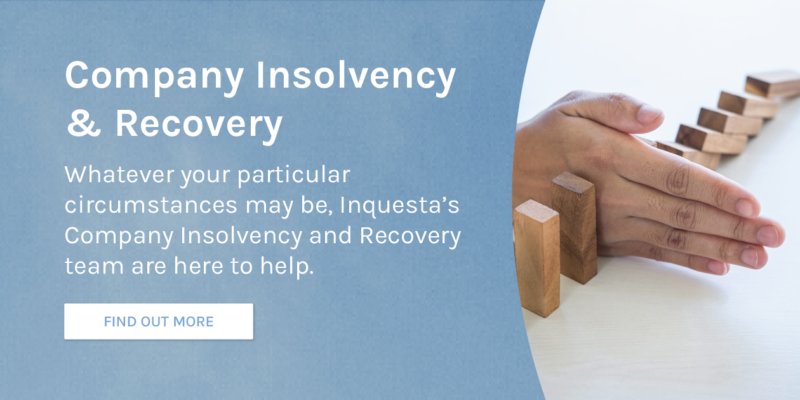In business, progress is rarely linear. The market and wider economy are constantly changing, working practices evolving, while technological innovations rest for no one. There will be times, including during insolvency, when some, or even all, of these external factors combine to make tough decisions unavoidable. For many businesses, these shifting sands could lead to one of the most difficult calls that can be asked of a director — how to make employees redundant.
If you’ve exhausted your available options and have no choice but to let people go, this is the time to consider the advantages of members’ voluntary redundancy. But what is it, and how does it work? And, what are the benefits in comparison to compulsory redundancy? We can help you to unravel this complex situation, and make decisions that benefit your business and its employees in the long-term.
When is Redundancy Necessary?
Redundancy is necessary for businesses when a restructure or change of direction becomes unavoidable. The likelihood of a reduced headcount typically comes about in a number of fairly common circumstances. These include mergers, as a result of an economic downturn, and when advances in technology make roles obsolete. If the situation has become severe, redundancy could be a central requirement of liquidation, receivership or administration.
It’s important to note that comprehensive steps should be taken to avoid both compulsory and members’ voluntary redundancy. These include:
- Cutting recruitment
- Limiting overtime
- Offering early retirement
- Moving affected employees to a different business area
Companies often need to offer members’ voluntary redundancy before they can consider compulsory measures. In many cases, contracts and company handbooks could contain this stipulation, so will need to be adhered to to avoid potential breaches of employment law.
What is Members’ Voluntary Redundancy?
Members’ voluntary redundancy offsets the upheaval of major business changes such as administration by offering individuals financial inducements to leave. As well as providing a more attractive package for outgoing employees, there are also potential benefits to team morale. In effect, members’ voluntary redundancy gives unhappy employees a shot at a clean break, which can improve the atmosphere among the remaining staff.
The Process
As is usually the case with major business changes, clear communication is vital in the early stages. The clearer you are, the less scope there will be for mixed messages to filter through to unaffected employees. Therefore, you will need to start by telling any and all eligible staff about the wider picture — and what the business is doing to manage the situation. Once the circumstances have been explained, you can then raise the option of members’ voluntary redundancy and outline how the process works.
Your next step will be to confirm the details of the voluntary redundancy package in a letter to any interested workers. Again, communication is key here, so make sure everything is crystal clear, with the likes of notice periods, key dates, annual leave, and final payments being covered in clear, simple terms.
It’s not unheard of for people who accept members’ voluntary redundancy to have a change of heart afterwards. You should approach these employees with respect and empathy. Consider talking to them about their decision in case a simple accommodation can be made. Finally, when you do reach an agreement, make sure everything is documented in writing for future reference.
If you believe that insolvency is on the horizon, your future prospects will dictate how you tackle your workforce. If there is a path forward via pre-pack administration, Company Voluntary Arrangement, or administrative receivership you will need to pay close attention to TUPE regulations. However, any businesses that are in terminal decline and are facing liquidation will not.
What are the Benefits of Voluntary Redundancy?
Many of the biggest benefits of voluntary redundancy come down to perception. When you offer employees the chance to decide their own futures, this can project a more transparent and sensitive image that filters down through the wider business. The subsequent restructure could also ensure that you move forward with the right people in the right positions.
Before you accept requests for members’ voluntary redundancy, it’s crucial that you first have a broader appreciation of the skills you will need to flourish in the future. This ties into one of the key benefits of voluntary redundancy — the ability to streamline operations to match the modern landscape. If you don’t have a firm grasp of what you need to succeed, you could realise that you’ve lost essential employees when it’s too late to do anything about it.
What are the Disadvantages of Voluntary Redundancy?
While there are obvious benefits to voluntary redundancy, it’s important to understand that there are also disadvantages. From the possibility of shrinking your talent pool to cost and morale implications, there are a range of factors to bear in mind. Therefore, it’s crucial that you consider the full picture before making any concrete decisions.
The potential risks include:
- Loss of Talent: In an ideal world, members’ voluntary redundancy could give you a chance to tighten up across the board. However, there’s a chance that your most talented and experienced staff will want to transfer their skills to a role outside of the business. Refusing their requests could also damage their morale and hamper productivity.
- Increased Cost: Ordinarily, you will need to offer a better financial package for departing employees than they might expect through compulsory redundancy. This might not be ideal if you’re looking at the very real spectre of, for instance, liquidation.
- Unhappy Workers: Unless you have an unprejudiced and transparent selection criteria, some employees might feel that they have been treated unfairly. In a wider sense, it’s important that you consider and address morale throughout the redundancy process, as anyone who feels dissatisfied with the result of their request could have lingering feelings of discontentment.

Does an Employer Need to Accept a Request For Voluntary Redundancy?
Although you’re not obliged to accept a request for voluntary redundancy, you will need to approach the situation with care. Refusal could lead down the path towards an employment tribunal, so it’s important to stay on firm ground by keeping detailed records of communication between you and any affected employees. It’s crucial to bear in mind the morale of the wider enterprise, so you will need to consider the likely repercussions of keeping unhappy staff.
Ultimately, if you are cutting back due to factors like insolvency, it’s important to keep a fixed eye on your responsibilities as a director. This means including the welfare of your workforce alongside other obligations, such as paying creditors.
Your Ally in Protecting the Essential Assets
The welfare of employees is a natural concern for business owners who are faced with insolvency. In an ideal world, devising a robust business recovery plan will be enough to improve the financial picture and cement the future of your biggest assets — your workforce. And yet, it’s a sad fact of enterprise that circumstances do sometimes change for the worst and tough decisions may need to be made.
Whatever your reasons for downsizing, it’s crucial that you follow the right processes when considering members’ voluntary redundancies. Not only will you need to pay close attention to TUPE legislation and company policies, but you will also need to address the broader demands of administration and/or liquidation. All of this demands a reassuring and experienced guide to help you negotiate such choppy waters.
At Inquesta, we understand that these difficult decisions can be made easier with expert guidance. We completely understand the variety of challenges and difficulties that often arise as a result of insolvency and administration. We can help you to understand your obligations and ensure that everything you do is in keeping with the latest guidelines and regulations. Our advice is always tailored to your circumstances, providing you with cast iron assurance from an expert team.
Don’t leave the challenges until it’s too late to act. Contact our team of insolvency experts today to discuss how we can assist you in managing your situation with calmness and clarity.



